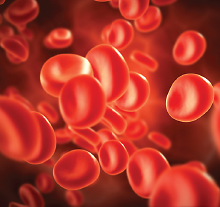Vascular Problems May Increase Psychosis Risk in Alzheimer’s
Hallucinations and delusions are a common symptom of Alzheimer’s disease, but the pathology that underlies these psychotic symptoms is unclear.
A recent analysis published in the Journal of Alzheimer’s Disease suggests that cerebrovascular disease—conditions that limit the circulation of blood to the brain—may be a major determinant of psychosis in people with Alzheimer’s disease.
A team of researchers analyzed autopsy data from over 1,000 patients from the National Alzheimer’s Coordinating Centre database.
Among the 890 patients who had been clinically diagnosed with Alzheimer’s while they were alive, those who had developed psychosis showed more cellular signs of Alzheimer’s such as excess protein deposits and neurofibrillary tangles. However, this correlation was not evident among the 728 patients who had the disease confirmed by autopsy (Alzheimer’s can be confirmed only through an autopsy).
When limiting their analysis to only the confirmed cases of Alzheimer’s, the researchers found that vascular and Lewy body pathologies and vascular risk factors, including a history of hypertension and diabetes, were associated with the development of psychosis.
Fischer C, Qian W, Schweizer T, et al. Lewy Bodies, Vascular Risk Factors, and Subcortical Arteriosclerotic Leukoencephalopathy, but not Alzheimer Pathology, Are Associated With Development of Psychosis in Alzheimer’s Disease.
J Alzheimers Dis. Nov 30, 2015. [Epub ahead of print]
Exercise Improves Cognition In People With Early Psychosis
Physical activity may help to improve memory and attention in people with early psychosis, according to a study published in npj Schizophrenia.
Researchers at the University of Hong Kong and the University of British Columbia randomly assigned 124 women with early psychosis (who were aged 16 to 60 and were stabilized on antipsychotic medications) to one of three groups: one group participated in yoga while another group engaged in aerobic exercise for 12 weeks; the remaining participants were assigned to the waitlist control group.
Compared with the control group, women in both the yoga and exercise groups showed significant improvements in working memory and depressive symptoms after 12 weeks. The yoga group also demonstrated additional improvements in attention and verbal acquisition. These improvements were still evident at follow-up 18 months later.
Given the long-term stability of these improvements, along with the relatively low cost and lack of side effects associated with yoga or exercise, the authors believe that physical activity could be a valuable adjunctive therapy for patients with psychosis.
Lin J, Chan S, Lee H, et al. Aerobic Exercise and Yoga Improve Neurocognitive Function in Women With Early Psychosis.
npj Schizophrenia. Dec 2, 2015; 1:15047.
Little Evidence for Nalmefene As Alcohol-Dependence Therapy
A meta-analysis published in PLoS Medicine suggests that there may not be enough published evidence to support the use of the opioid antagonist nalmefene as a therapy for alcohol dependence. Nalmefene was approved by the European Medicines Agency in 2013 for the treatment of alcohol dependence.
The analysis combined five randomized, controlled trials (RCTs) (totaling over 2,500 participants) and found no differences between nalmefene and placebo in several categories—including mortality, quality of life, or quality of mental health—after six months or one year of treatment.
Participants taking nalmefene did have fewer heavy drinking days and lower total alcohol consumption than those taking placebo, but they also had a higher rate of discontinuation from the clinical study. Thus, the reviewers believe attrition bias caused by the high withdrawal rate may explain the differences in alcohol consumption.
“These findings show that there is no high-grade evidence currently available to support the use of nalmefene for harm reduction among people being treated for alcohol dependency,” the study authors wrote. “In addition, they provide little evidence to support the use of nalmefene to reduce alcohol consumption in this population” and “highlight the need for further RCTs of nalmefene compared to placebo and naltrexone for the indication specified in the market approval.”
Palpacuer C, Laviolle B, Boussageon R, et al. Risks and Benefits of Nalmefene in the Treatment of Adult Alcohol Dependence: A Systematic Literature Review and Meta-Analysis of Published and Unpublished Double-Blind Randomized Controlled Trials.
PLoS Med. Dec 22, 2015; 12(12):e1001924.
Varenicline Can Be Effective in Patients With Recent Heart Attack
Smoking cessation is critically important for smokers who experience an acute coronary syndrome (ACS), yet a majority of smokers hospitalized for ACS fail to kick the habit.
A randomized, controlled trial has now found that starting varenicline therapy while smokers are still in the hospital may offer an effective way to promote cessation.
A total of 302 active smokers with ACS began a 12-week therapy with either varenicline or placebo prior to their discharge; all participants also received low-intensity counseling, during which counselors reminded the study participants of the importance of smoking abstinence following ACS. Abstinence was measured using both patient reports and biochemical analysis 24 weeks after the study start.
The participants taking varenicline showed improved smoking habits on several measures. A total of 47.3 percent of the varenicline group was abstinent for at least seven days prior to the 24-week assessment compared with 32.5 percent in the placebo group; 35.8 percent of varenicline users had remained abstinent throughout the 24-week period compared with 25.8 percent of placebo users; and 67.4 percent of varenicline users reduced their smoking levels by at least half by the end of the study compared with 55.6 percent in the placebo group.
Importantly, varenicline use did not result in any increased rates of serious adverse events—including cardiovascular events—in these high-risk patients who had just been hospitalized.
This trial, known as the Evaluation of Varenicline in Smoking Cessation for Patients Post-Acute Coronary Syndrome (EVITA), was presented at the American Heart Association 2015 Scientific Sessions and was also published in Circulation.
Eisenberg M, Windle S, Roy N, et al. Varenicline for Smoking Cessation in Hospitalized Patients With Acute Coronary Syndrome.
Circulation. 2016 Jan 5;133(1):21-30.
Animal Study Suggests Rolipram May Alleviate Cognitive Problems Associated With Alzheimer’s
The tau protein, which is associated with Alzheimer’s disease, may cause its damage by breaking down proteasomes, the waste disposal systems of a cell, reports a study published in Nature Medicine.
Using both a mouse model of Alzheimer’s disease and cultured brain cells, researchers from Columbia University found that as tau levels increased, there was lower activity of proteasomal enzymes and higher levels of ubiquitinated proteins (proteins tagged for proteasome delivery). These findings suggest that tau helps facilitate the accumulation of toxic proteins that eventually lead to the death of neurons, according to the study authors.
The researchers also found, however, that the medication rolipram (initially designed as an antidepressant) can alleviate some of these problems, suggesting a potential therapeutic target.
Rolipram increases the levels of cyclic AMP, an important metabolite for brain cells and a regulator of proteasomes. Administering rolipram to brain cells with tau buildup improved proteasome activity and reduced the rate of tau accumulation.
When the medication was evaluated in a mouse model of Alzheimer’s disease, rolipram improved the cognitive performance of the mice compared with placebo; however, this effect was seen only in younger animals, suggesting that rolipram’s effectiveness may be limited to early stages of the disease. ■
Myeku N, Clelland C, Emrani S, et al. Tau-Driven 26S Proteasome Impairment and Cognitive Dysfunction Can Be Prevented Early in Disease by Activating cAMP-PKA Signaling.
Nat Med. Jan 2016;22(1):46-53.





